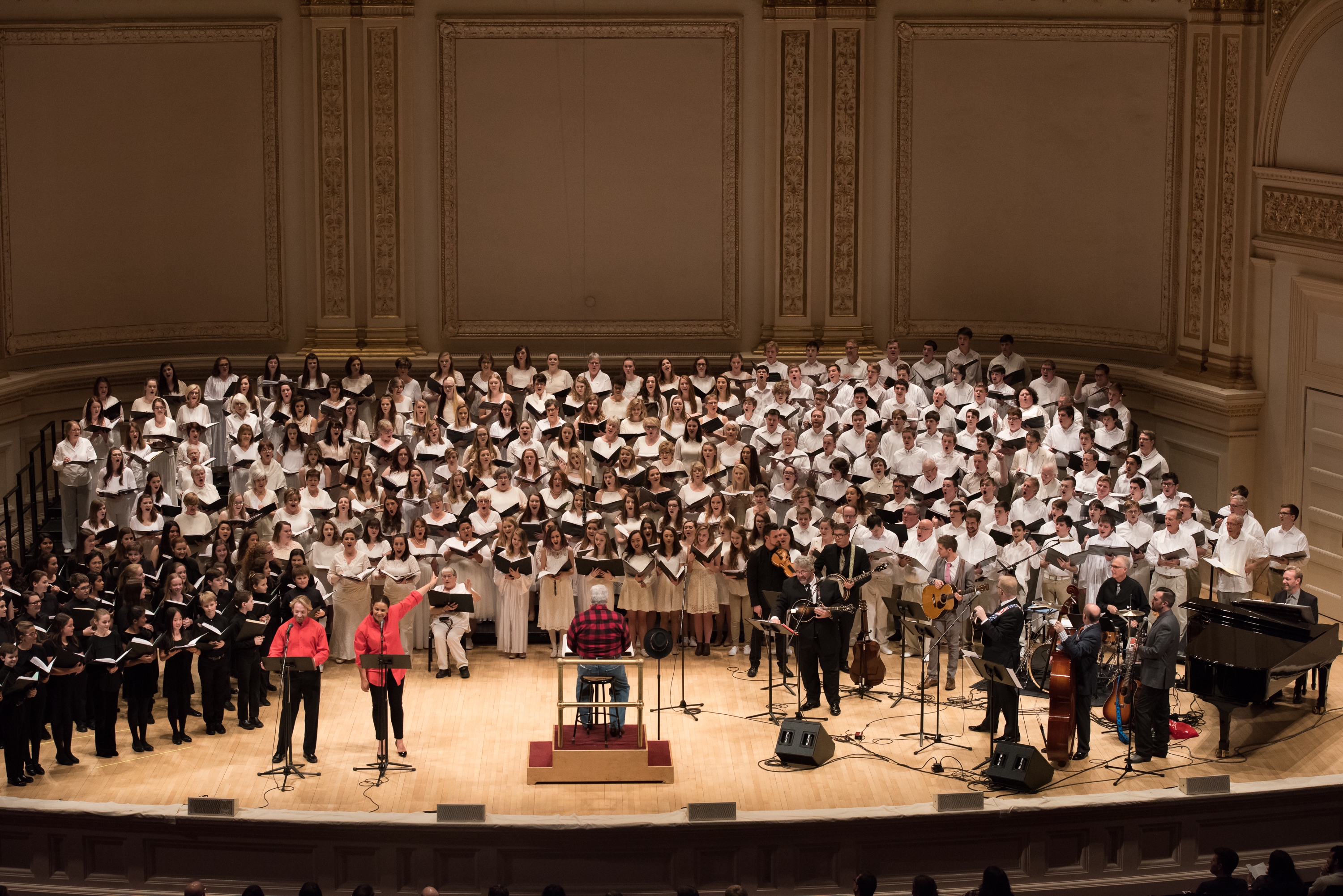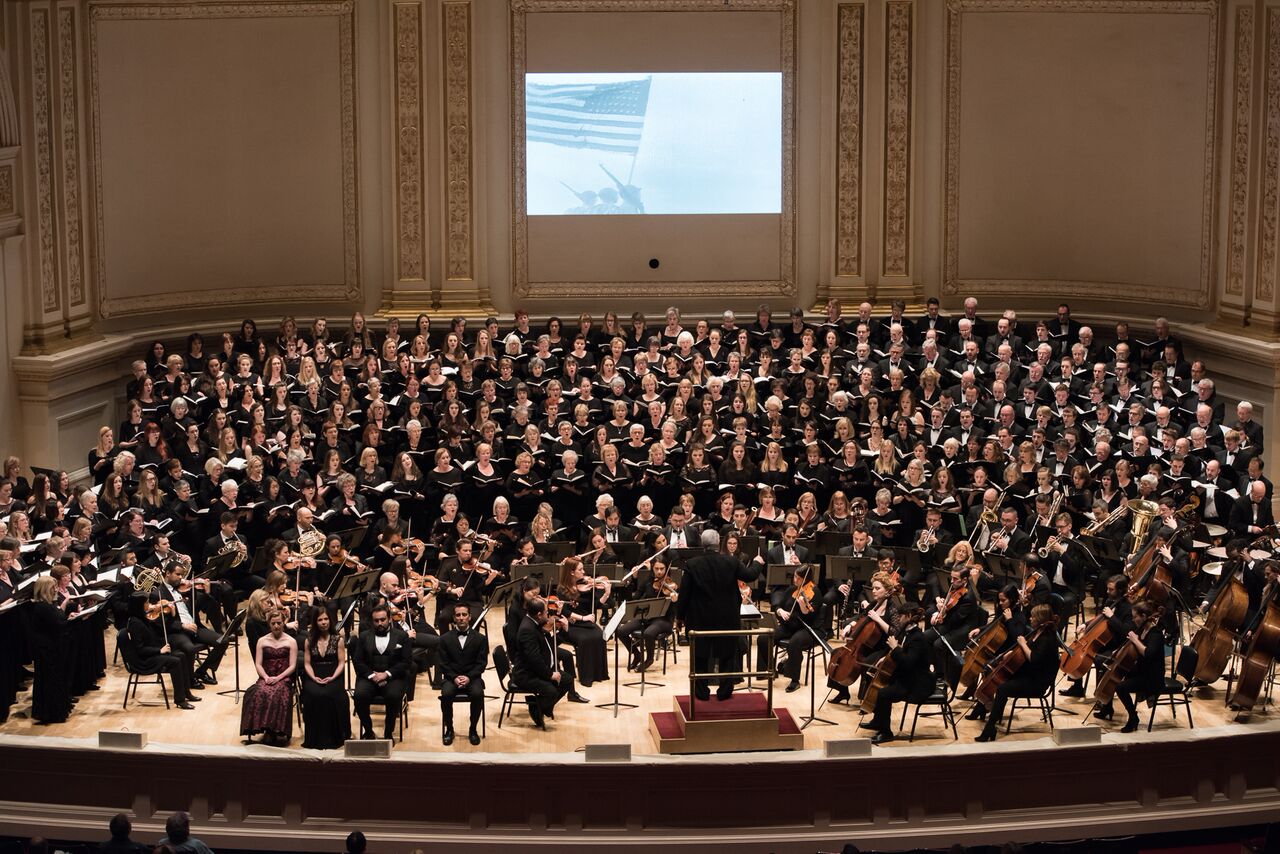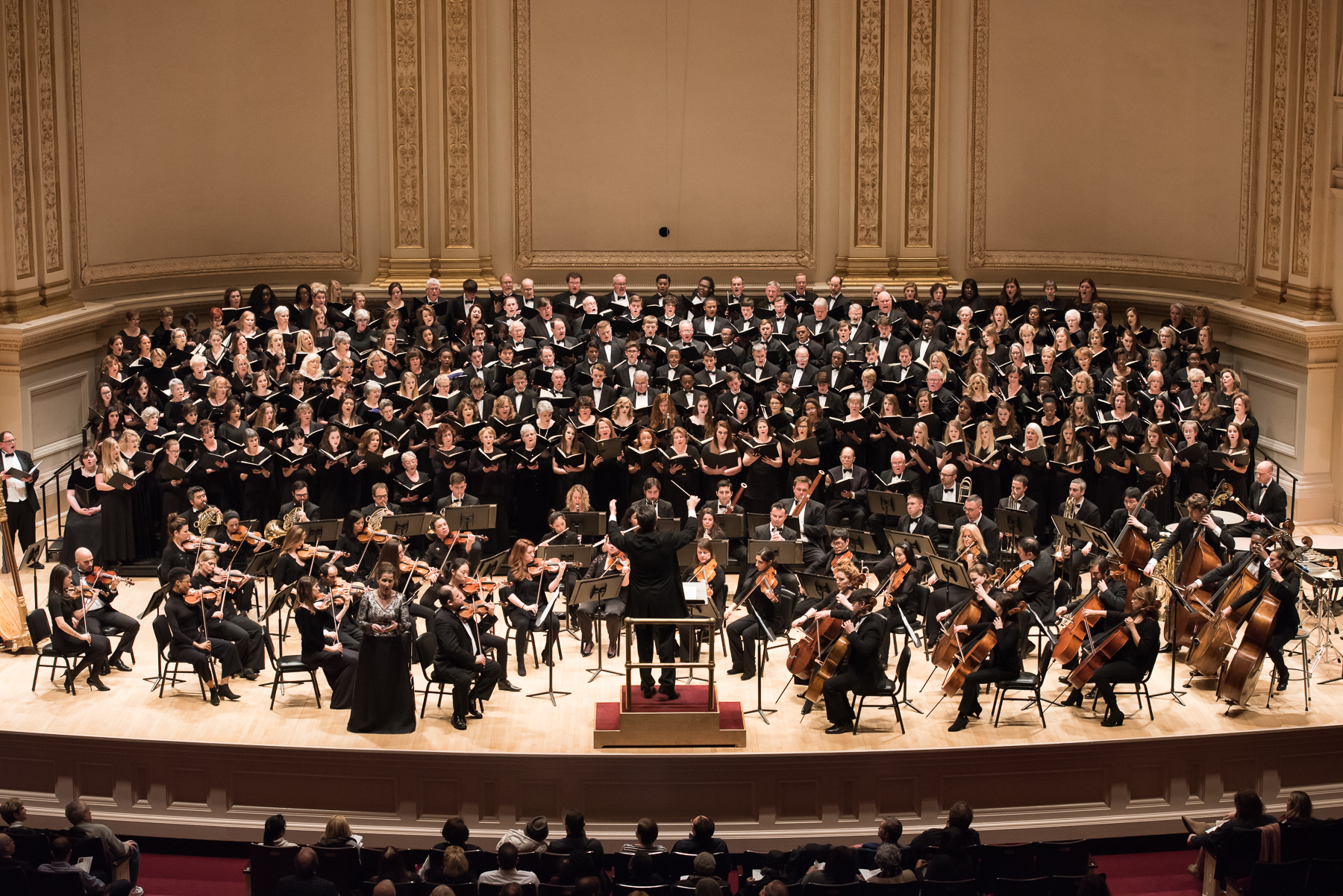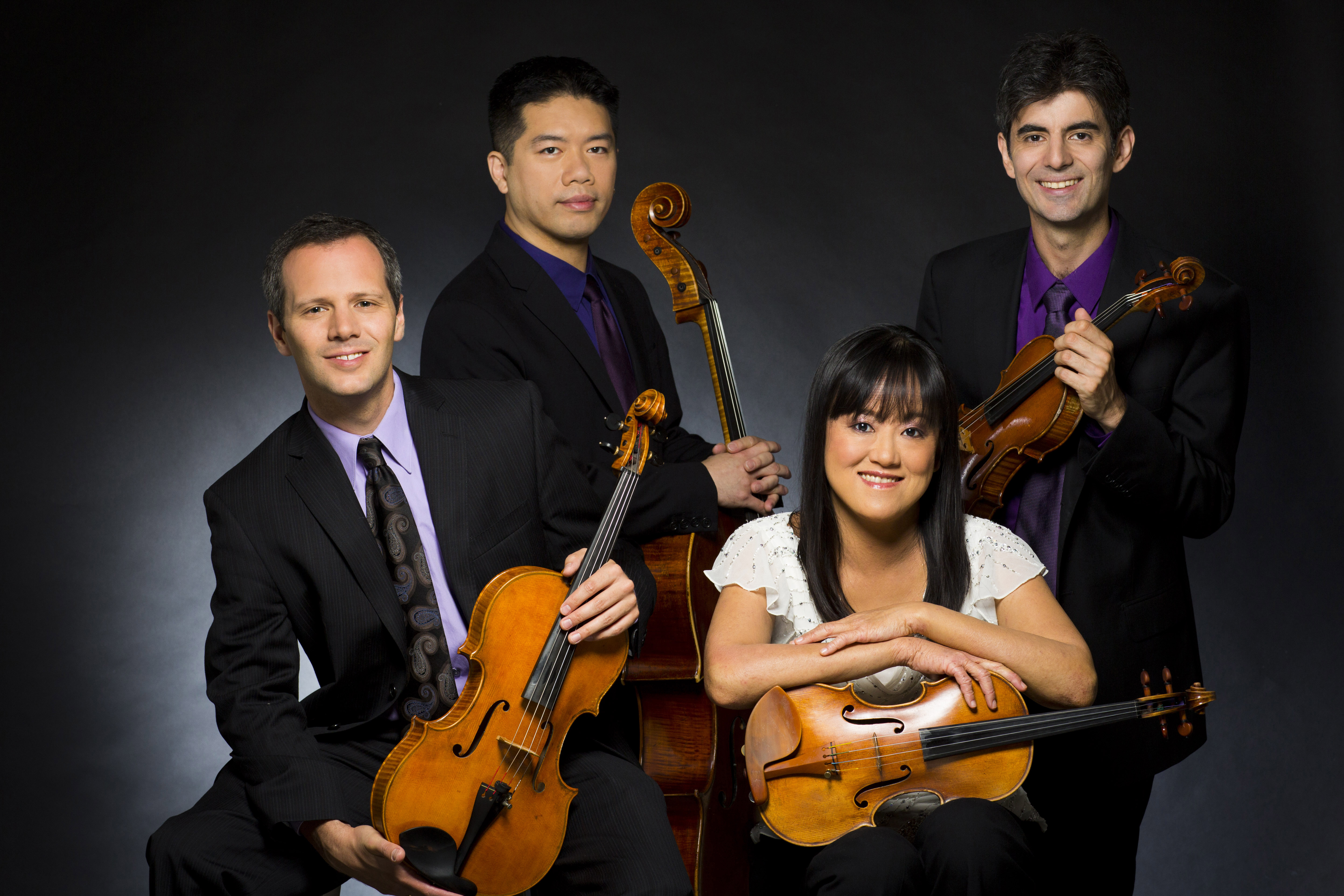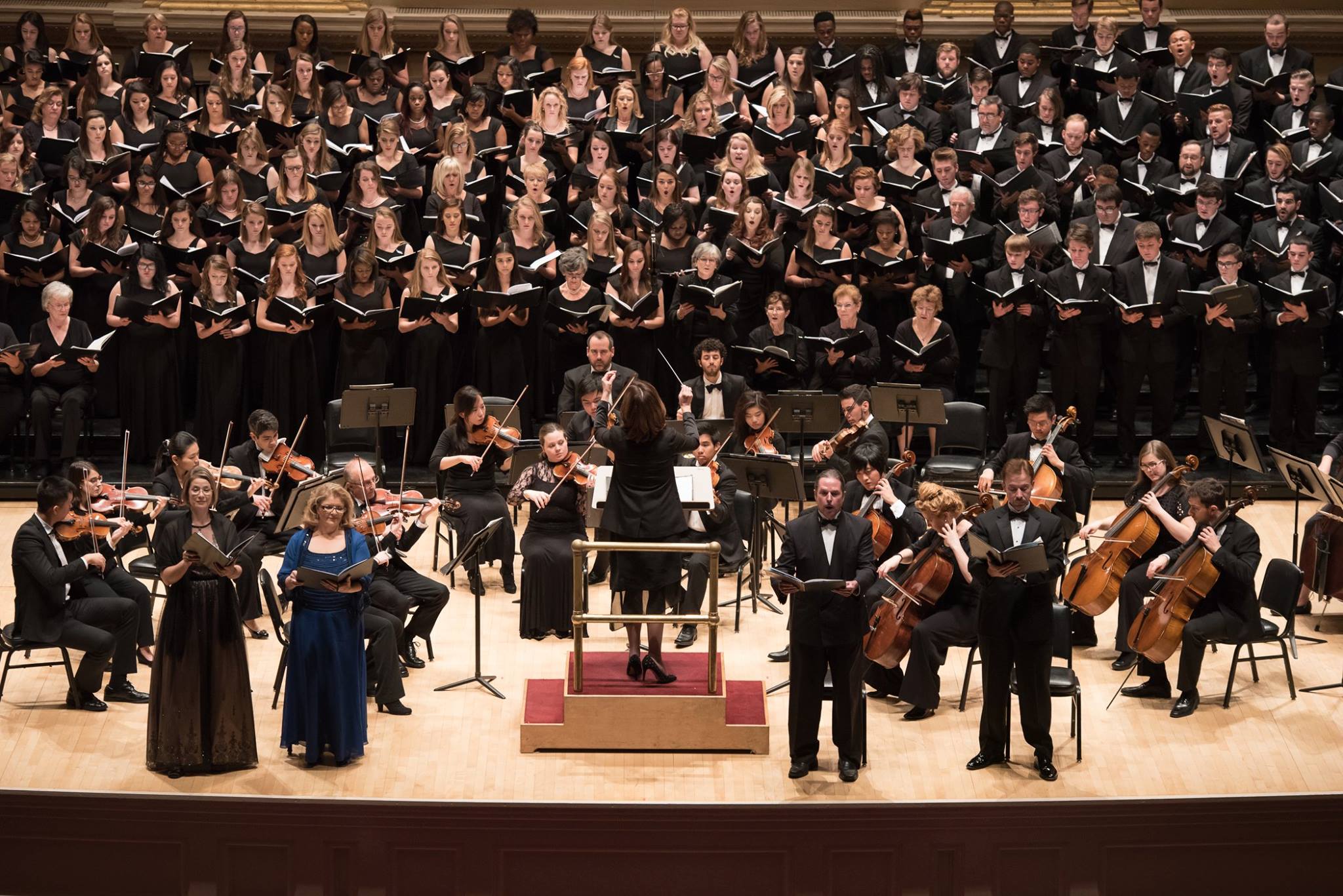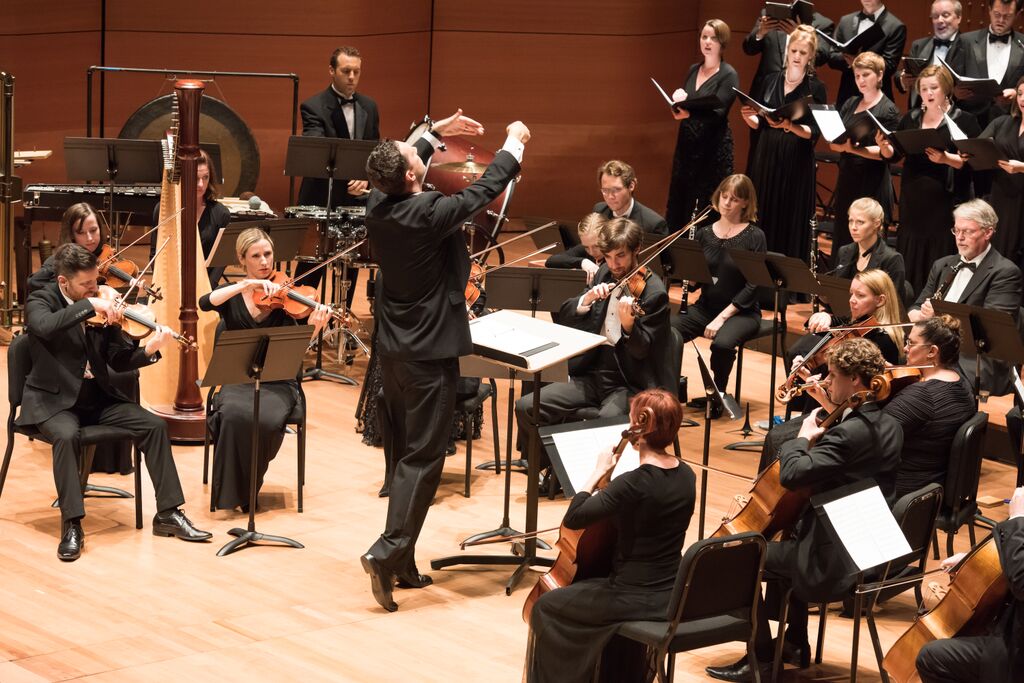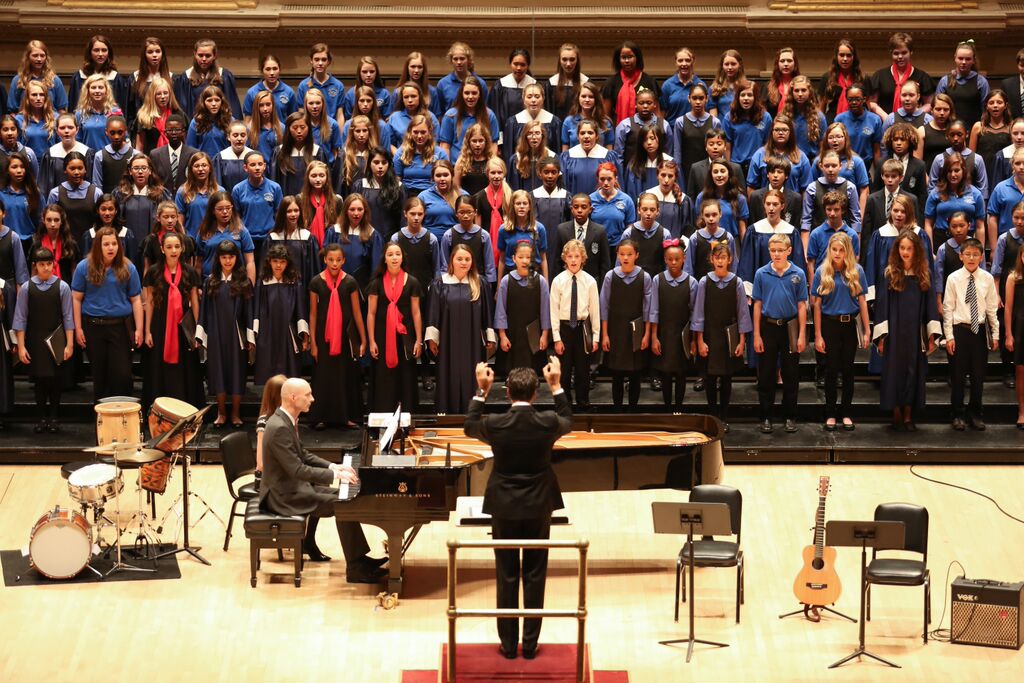Distinguished Concerts International New York (DCINY) presents Mortals & Angels: A Bluegrass Te Deum
Jonathan Griffith, DCINY Artistic Director and Principal conductor
Distinguished Concerts Singers International
Dailey & Vincent, special guests
Jay Disney and Linda Powell, narrators
Luigi Salerni, director
Carol Barnett, DCINY composer-in-residence; Marisha Chamberlain, librettist
Stern Auditorium at Carnegie Hall, New York, NY
January 25, 2016
How do you get to Carnegie Hall? Practice, practice, practice? Not this week! “Shovel, shovel, shovel!” quipped Jamie Dailey of Dailey & Vincent, the world-renowned bluegrass group, to the delight of all those in attendance. In the aftermath of what some were calling “Snowmageddon” (or “Snowpocalypse”, if you prefer), Distinguished Concerts International New York (DCINY) presented a concert entitled Mortals and Angels: A Bluegrass Te Deum. The first half was selections from Dailey & Vincent, and the second half was the world premiere of the work for which the concert was named, Mortals and Angels; A Bluegrass Te Deum, a “follow-up” of sorts to composer Carol Barnett and librettist Marisha Chamberlain’s earlier collaboration The World Beloved: A Bluegrass Mass.
As I entered the hall, I noticed that hundreds of white handkerchiefs (with the name of the concert and date printed on them) draped over the seats. I pocketed this concert swag and was sure it was going to be of some use later.
I will admit that I had my doubts about this program beforehand. On a previous program, with the same composer and librettist, I was not entirely convinced that either musical style of the combination, bluegrass or classical, was well served, and I had some reservations about the libretto. Interested readers can follow to link to read more- Bluegrass 57@7 review. In fairness, it should be mentioned that my colleague David LaMarche did not have any such issues when he reviewed the same work in 2014 – Sounds of Americana review. Would I have the same opinion with this new work?
Dailey & Vincent took the stage to open the night. The nine members are Jamie Dailey (vocals/guitar), Darrin Vincent (bass/vocals), Aaron McCune (guitar/vocals), BJ Cherryholmes (fiddle), Bob Mummert (drums), Buddy Hyatt(piano), Jeff Parker( mandolin/vocals), Jessie Baker (banjo), and Shaun Robertson(guitar).”How many of you have heard bluegrass?” asked Jamie Dailey. “Well, you’re gonna hear some now!” he said as the group launched its six-song set. This listener is no bluegrass expert, but he is more than capable of recognizing expert playing and singing. The six selections alternated between fast and slow works, but all offered ample opportunities for these fine musicians to showcase both their individual talents in solo passages and very tight ensemble play.
Jamie Dailey bantered with the audience between numbers, introducing his band mates and telling stories about each. Darrin Vincent introduced Mr. Dailey. Just one fun fact – Shaun Robertson was appearing with the group for the first time, after being discovered on Instagram and being invited to audition for the group! We live in interesting times!
A cover of “Elizabeth”, the Statler Brothers’ hit (for which Dailey & Vincent received a Grammy nomination in 2011) was lovely, and “American Pride”, a patriotic song written by Jamie Dailey, brought the house down. A visibly moved Mr. Dailey humbly accepted the standing ovation. He has a voice that can soar with the best of them!
There was no intermission, but as Dailey & Vincent played on, the stage began to fill with singers dressed entirely in white, soon to be joined on the side of the stage by a much smaller number of very young singers dressed in all black. Conductor Jonathan Griffith took to stage dressed in blue jeans, flannel shirt with bandana, and hat, and took out his hankie and waved it to the audience, signaling the start of Mortals and Angels. Commissioned by the DCINY Premiere Project, Mortals and Angels is a thirteen-movement work that is close to an hour in length. Jay Disney was the spokesperson for the Mortals, who were represented by the children’s choir dressed in black, Dailey & Vincent, and the audience members on the parquet level. Linda Powell was the spokesperson for the Angels- the choir members dressed in all white and the audience members in the upper levels. Mr. Disney gave the “back story” for what was to happen; in short, the “Mortals” were on a fishing vacation and happened to encounter a group of Angels at the same spot (just go with it…). Mr. Disney and Ms. Powell were both “personality plus”, and their playful banter with each other and the audience as they “defended” their sides’ interests was good, clean fun, and added to the theatric quality of the work, though I’m not sure if it was really necessary. Perhaps I’ll leave it at that and let others argue for each side.
The “Mortals” sans Dailey & Vincent were overwhelmingly outnumbered by the “Angels”. I’m still wondering if it was intended for a child’s choir to be “battling” forces seven times their numbers (Mr. Disney made a remark about the 222 singers behind him, as he pointed to the “Angels”). These youngsters gave it all they had, but they were almost completely covered. This is perhaps something that should be considered in future performances.
The text of the work flows with a natural ease, without any agendas (hidden or unhidden), and the music is sincere and without any pretense. This is a winning combination, and with the unique talents of Dailey & Vincent, it was a winning performance. The audience got into the act with the waving of those white handkerchiefs. It was definitely not your typical concert experience, but it was full of raucous joy, something our world today is often lacking.
“We Don’t Stay Afraid for Long” was a favorite, both for the music, and the verse, especially the lines, “Oh, some of us believe in zombies/Some in fairies and elves/Some of believe in angels/And some of us just believe in ourselves.” There’s a lot of wisdom in those words.
So one might ask who won, the Mortals or the Angels? Let’s call it a draw, or better yet, let’s say everyone won, with special credit to Dailey & Vincent, who were the stars not just of this work, but of the entire concert.

